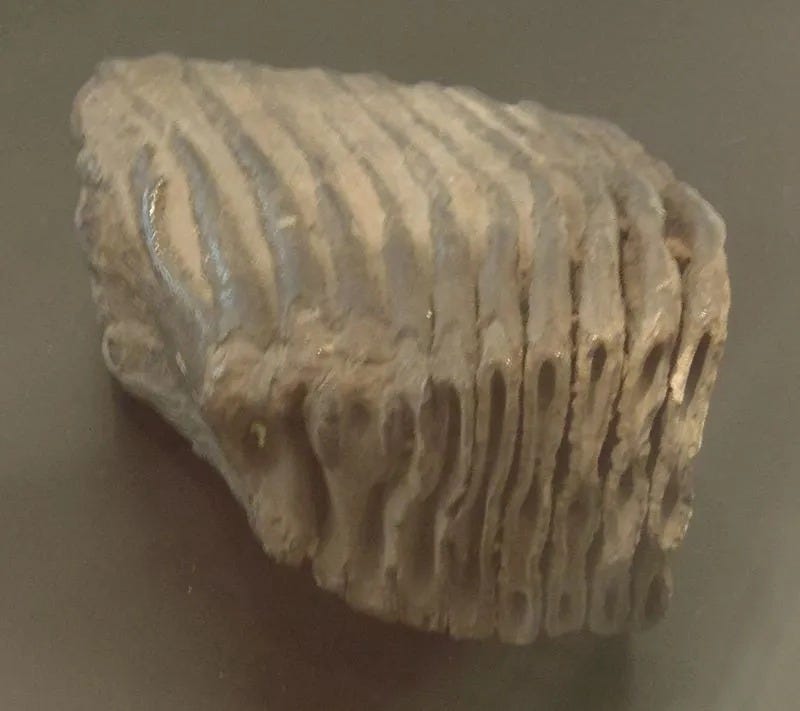One spring day in 1988, as a young archaeologist, I conducted a small experiment - I sat down on a backpack chair with a thermos of coffee by the gravel sorting plant in H.C. Ervald's gravel pit in Seest, on the western outskirts of Kolding. I had heard and read that there, on the edge of Kolding Ådal and Hylkedalen, a long series of exciting finds of animal bones had been made over the years, such as straight-tusked elephant and Irish elk. A few finds of flint tools had also been made.

The gravel sorting plant did its monotonous, noisy work, and the cone of sand and gravel in front of me grew. After a couple of hours, something suddenly happened - some white lamellar objects landed at the top of the pile. A subsequent examination at the Zoological Museum in Copenhagen showed that they were pieces of an elephant tusk, probably from a straight-tusked elephant. Dating: probably the last interglacial period, Eemian, about 130,000-115,000 years ago.
In the following days, I looked for worked flint in the sorted piles of stones around the gravel pit and did find a couple of promising flakes. I spent a total of a couple of days in the gravel pit during that period and wonder today why I didn't set aside a month to systematically keep an eye on the gravel sorting machine. What would that have yielded? - Or was the discovery of the elephant tusk just a fluke? I excuse myself by saying that other tasks beckoned, not least the investigation of the 13,000-15,000 year old settlements from the Hamburgian and Federmesser cultures at Slotseng in Southern Jutland, the oldest settlements in the country to date.
If it is "simply" a matter of proving as quickly as possible that humans - in the form of Neanderthals and/or early Homo sapiens - lived on Danish soil before the Last Glacial Maximum, i.e. about 25,000 years before today, then the Seest area would be one of the most promising places.
The theory is that ice advances around that time plowed up old deposits containing animal bones and worked flint, and that these things, in connection with the melting and retreat of the ice, embedded in layers of sand and gravel, have been spread over a larger area. The animal species show that there is both a "warm" fauna, represented by e.g. straight-tusked elephant and Merck's rhinoceros, and a "cold" one in the form of e.g. steppe bison and Irish elk.
This suggests that some of the bones are from the last interglacial period, the Eemian, and others from relatively mild, ice-free periods, interstadials, during the last ice age, the Weichselian.
The exploration of the Seest gravel pits is primarily associated with the eminent amateur archaeologist, the lawyer Erik Westerby, who visited the area over a period of about 25 years. He reasoned that a locality so rich in animal bones must also be a potential archaeological locality. That this fauna must have had "the lord of creation", man, right at its heels. Westerby visited the gravel pits in his spare time, bought breakfast rolls for himself and the workers on his way out to Seest, and when the day was done, the bakery bags were used to store and transport bones and flint ...



Tak for spændende tekst. Jeg er opvokset i Vamdrup. Ikke langt fra Seest. Kan man stadig gå på opdagelse i grusgraven ?